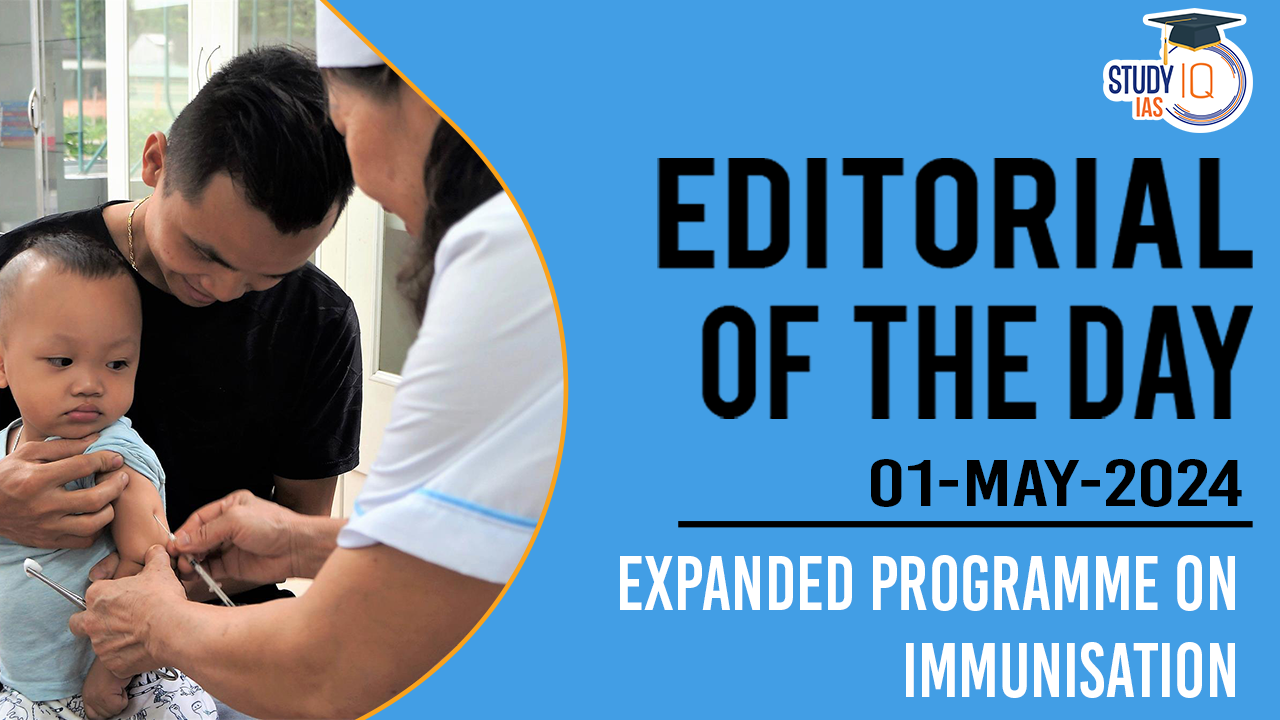Table of Contents
Context: The year 2024 commemorates 50 years since the launch of the Expanded Programme on Immunization (EPI).
About Expanded Programme on Immunization (EPI)
- Launched in 1974, following the near-eradication of smallpox.
- Aimed to leverage existing immunisation infrastructure and trained personnel to expand vaccine benefits.
- Sparked national immunisation programs in most countries worldwide.
- In India:
- The Expanded Programme on Immunization was launched in 1978.
- It was renamed as Universal Immunization Programme in 1985 when its reach was expanded beyond urban areas.
- In 1992, it became part of the Child Survival and Safe Motherhood Programme.
- In 1997 it was included in the ambit of the National Reproductive and Child Health Programme.
- The Universal Immunization Programme is an integral part of the National Rural Health Mission (launched in 2005).
Progress in Immunization
- Globally: Vaccines against 6 diseases in 1974, now 13 universally recommended vaccines.
- Additionally: 17 context-specific vaccines recommended.
- Ongoing research: Nearly 125 potential vaccines in development, many targeting diseases in low- and middle-income countries.
- In India: Under UIP, immunisation is provided free of cost against 12 vaccine preventable diseases.
- 9 diseases (Nationally): Diphtheria, Pertussis, Tetanus, Polio, Measles, Rubella, severe form of Childhood Tuberculosis, Hepatitis B and Meningitis & Pneumonia caused by Hemophilus Influenza type B
- 3 diseases (Sub-nationally): Rotavirus diarrhoea, Pneumococcal Pneumonia and Japanese Encephalitis.
Success Story
Rising Immunisation Coverage
- Global Progress: Since the 1970s, immunisation coverage among children has increased significantly. In the early 1970s, only about 5% of children in low- and middle-income countries received three doses of the DPT vaccine. By 2022, this number had surged to 84% globally.
- Success in India: In India, the percentage of children receiving the recommended vaccines has consistently increased over the years, reaching 76% during 2019-2021.
Impact on Public Health
- Eradication and Elimination of Diseases: The use of vaccines has led to the eradication of smallpox and the elimination of polio from all but two countries. Many other vaccine-preventable diseases are now rare.
- Lives and Costs Saved: Vaccination programs have saved millions of lives and prevented billions of hospital visits and hospitalizations. Economic analysis suggests that every dollar spent on vaccinations yields a return of seven to 11 times the investment.
Dominance in Public Health Programs
- High Coverage: Immunisation programs have achieved higher coverage rates than almost any other health initiative in nearly all low- and middle-income countries, including India.
- Public Sector Dominance: Despite the significant role of the private sector in overall health services in countries like India, where they provide nearly two-thirds of such services, the public sector delivers 85% to 90% of all vaccinations.
Challenges and Inequities
- Recent Decline in Coverage: According to UNICEF’s 2023 ‘The State of the World’s Children’ report, there was a decline in childhood immunisation coverage in 2021, the first in over a decade. In 2022, approximately 14.3 million children globally did not receive any recommended vaccines, and another 6.2 million were only partially immunised.
- Persistent Inequities: Despite overall progress, there are still significant disparities in vaccine coverage across different regions, socio-economic groups, and other demographic factors in India, highlighting the need for targeted interventions.
Expanding Focus: From Children to All Ages
Historical Context
- Vaccines have not only been for children; they have been available for all age groups since the first vaccine against smallpox in 1798.
- Early vaccines for rabies, cholera, typhoid, and plague were developed for adults. The BCG vaccine, introduced in 1951, was also administered to adults.
Shifting Policies Towards Adult Immunization
- As child vaccination coverage improves, there’s a growing need to focus on adult and elderly immunisation.
- Recent policies, like the introduction of HPV vaccines for teenagers, are steps in this direction.
- Expanding adult vaccination coverage could potentially enhance overall vaccine uptake and address public health needs across all age groups.
Strategies for Enhancing Adult Vaccine Uptake
- Policy Initiatives: India’s National Technical Advisory Group on Immunization (NTAGI) should recommend vaccines for adults and the elderly to improve coverage significantly.
- Addressing Vaccine Hesitancy: Proactive efforts are necessary to combat myths and misinformation about vaccines.
- Physician Involvement: Healthcare providers should educate adults about the benefits of vaccines during routine visits.
- Research and Evidence: Medical institutions should study disease burdens in adults to better inform vaccine policies.
Conclusion
The 50th anniversary of EPI presents an opportunity to review and expand the UIP, incorporating strategies for adult vaccination and addressing persistent inequities. Initiatives like the adult BCG vaccination pilot and increased awareness from COVID-19 vaccination efforts pave the way for a broader focus on immunisation across all life stages.


 Utkal Divas 2025: Odisha Foundation Day ...
Utkal Divas 2025: Odisha Foundation Day ...
 List of Military Exercises of India 2024...
List of Military Exercises of India 2024...
 GPS Spoofing and Its Impact in India: A ...
GPS Spoofing and Its Impact in India: A ...





















